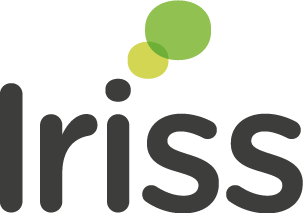Introduction
ASPCs collect statistical data to help drive improvement and support forward planning, informing policy and practice and shared agendas in support of adults at risk.
Improving data and information, in particular strengthening the focus on outcomes, was identified as a key strand of the ASP improvement programme (2019–22), informed by the 2018 thematic inspection by Care Inspectorate & scrutiny partners. We know that different local practices mean that we have lacked robust and comparable data to show national as well as local trends; or more frequent data captured quarterly. We also lack more person-centred indicators to show the whole ASP journey and tell us more about the people in it.
The response
Iriss was commissioned by the Scottish Government to co-design a new quarterly ASP Minimum Dataset, with and for the sector, that works both locally and nationally to provide robust and comparable data, recognising the challenges in this.
In 2021 Iriss completed a national mapping exercise of indicators frequently collected — with 22 ASPCs contributing to this — looking at these appreciatively to see which ones showed potential for roll out. We also recruited five core learning partners to co-design an ASP Minimum Dataset prototype, and test it over two quarters, using July–Sept 2022 and Oct–Dec 2022 data, seeking feedback from other critical friends, including multiple stakeholder groups represented in the national Data Reference Group. In addition, we have worked to align any indicators with changes in the new ASP Code of Practice, published July 2022.
Roll out and support available
For roll out, we have adopted a phased approach, appreciative of the changes required at local level to practices and systems..
This dedicated web-page contains support materials including:
- Workbooks (for Phase 1 and Phase 2) to populate with your data. These provide drop down lists for all indicators and scrutiny questions to support reflection and analysis.
- A Glossary of terms.
- FAQs about the project.
- ‘Summary of up-dates’ – highlighting any updates to guidance.
- Information on when and how to submit your quarterly data.
- An enquiry form – should you have additional questions.
We will also offer quarterly online drop-ins to support implementation, share progress and hear from you. Invitations to these drop-ins will come via Scottish Government colleagues.
Phase 1
Phase 1 indicators were provided in the relevant workbook for roll out from April 2023 until being replaced by the Phase 2 indicators for the year commencing April 2024.
Phase 2
Additional indicators were to Phase 1 for Phase 2. The full set of Phase 2 indicators is contained in the relevant workbook for roll out from April 2024.
Questions and downloads
We have produced a set of FAQs (attached below) and contact form should you have further questions. The FAQs document also contains information on some of the indicators we explored, but discounted (and our reasons for this), to ensure that any learning is not lost.
Please ensure that what you are working with aligns with the versions on this webpage.
When and how to submit your data
Quarterly data return dates for 2025/26
| Data collection period (inclusive) | Return Deadline | Anticipated Reporting to APCs for Management Purposes | |
|---|---|---|---|
| Quarter 1 | 01.04.25 - 30.06.25 | 15.08.25 | N/A |
| Quarter 2 | 01.07.25 - 30.09.25 | 14.11.25 | February 2026 |
| Quarter 3 | 01.10.25 – 31.12.25 | 13.02.26 | N/A |
| Quarter 4 | 01.01.26 – 31.03.26 | 15.05.26 | August 2026* |
* We anticipate publishing annual national reports. These collated reports will be for dissemination to and use by a wider audience (including organisations with a role in ASP and academics with an interest in ASP). The first such published report – for ASP data 2024/25 – is expected in autumn 2025.
All quarterly returns should be submitted to ASPData@gov.scot using the workbooks provided:
